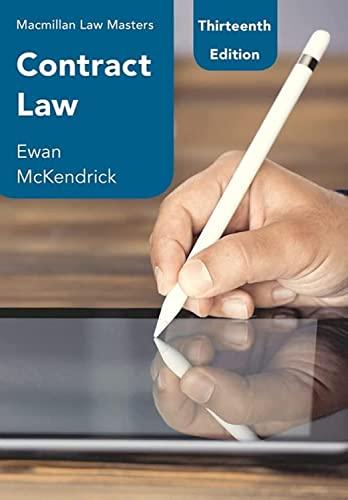Question
Scott Stephenson: Balancing the Duality of Ethics Whether it's Bernie Madoff defrauding investors, Wells Fargo had to respond to creating fake accounts in the names
Scott Stephenson: Balancing the Duality of Ethics
Whether it's Bernie Madoff defrauding investors, Wells Fargo had to respond to creating fake accounts in the names of real customers, or Mylan N.V. imposing huge price increases on its lifesaving EpiPen, it seems like there is never a shortage of ethical issues being an important aspect of the business. As shown by these examples, unethical decisions permeate different parts of the business and occur for different reasons.
In the case of Bernie Madoff, it was the greed of one person using a Ponzi scheme to defraud thousands of customers. In the case of Wells Fargo, the culprits were managers putting excessive pressure on workers to meet new account quotas. The case of Mylan included the dramatic rise in the price of the EpiPen in a short time span and reports that CEO Heather Bresch and other executives received compensation that increased over 700 percent during the same time frame. Adding to the Mylan case was the fact that Bresch is the daughter of West Virginia Senator Joseph Manchin, and prior to being appointed CEO at Mylan, Bresch served as Mylan's chief lobbyist and helped craft the Generic Drug User Fee Amendments and the School Access to Emergency Epinephrine Act.
Where does the responsibility of managing ethical behavior in organizations reside? The answer is everyone in the organization is responsible to act in an ethical manner. The primary responsibility resides, however, with the CEO and also with the chief financial officer, who has the responsibility to oversee financial compliance with laws and regulations. Scott Stephenson, the CEO of Verisk Analytics, recently commented on how he approaches the duality of what he terms a "loose-tight" approach to leadership where he provides his employees with the discretion and responsibility to make critical decisions in crisis situations where ethics might be involved. That's the loose part. He also works on communicating and building trust in his employees so that he has the confidence they will act responsibly and make the correct decisions in crisis situations. That's the tight part of his leadership duality.
Critical Thinking Questions
- Do you think Verisk Analytics, a technology company that needs innovation breakthroughs, benefits from Stephenson's "loose-tight" approach? What if Stephenson had been an autocratic leader? Explain your reasoning.
- What kind of participative leader (described below) does Stephenson seem to be? Explain your choice.
Step by Step Solution
There are 3 Steps involved in it
Step: 1

Get Instant Access to Expert-Tailored Solutions
See step-by-step solutions with expert insights and AI powered tools for academic success
Step: 2

Step: 3

Ace Your Homework with AI
Get the answers you need in no time with our AI-driven, step-by-step assistance
Get Started


